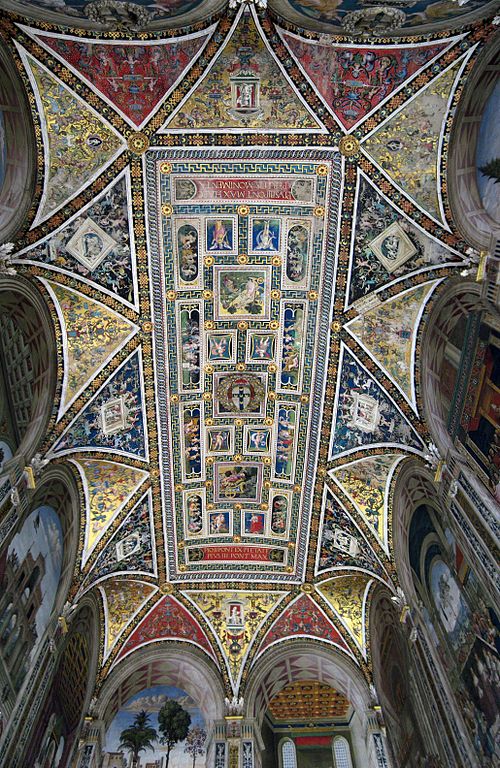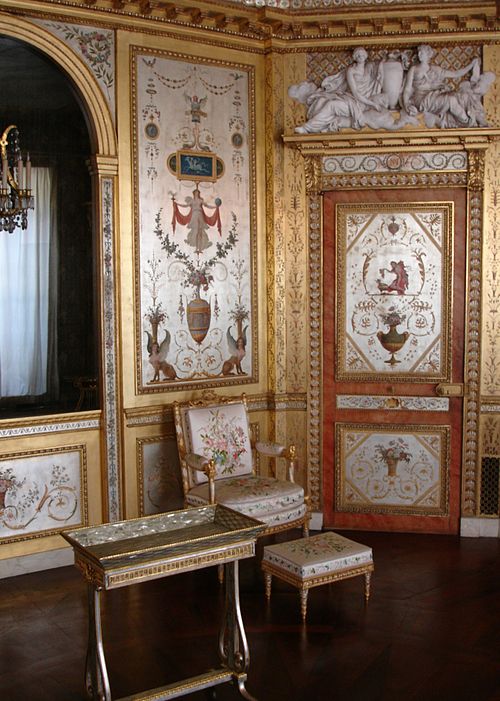Grotesqueadjective
distorted and unnatural in shape or size; abnormal and hideous
Grotesqueadjective
disgusting or otherwise viscerally reviling.
Grotesqueadjective
(typography) sans serif.
Grotesquenoun
A style of ornamentation characterized by fanciful combinations of intertwined forms.
Grotesquenoun
Anything grotesque.
Grotesquenoun
(typography) A sans serif typeface.
Grotesqueadjective
Like the figures found in ancient grottoes; grottolike.
Grotesqueadjective
Wildly or strangely formed; whimsical; extravagant; of irregular forms and proportions; fantastic; ludicrous; antic.
Grotesquenoun
A whimsical figure, or scene, such as is found in old crypts and grottoes.
Grotesquenoun
Artificial grotto-work.
Grotesquenoun
art characterized by an incongruous mixture of parts of humans and animals interwoven with plants
Grotesqueadjective
distorted and unnatural in shape or size; abnormal and hideous;
Grotesqueadjective
ludicrously odd;
Grotesqueadjective
comically or repulsively ugly or distorted
Grotesqueadjective
incongruous or inappropriate to a shocking degree
Grotesquenoun
a very ugly or comically distorted figure or image
Grotesquenoun
a style of decorative painting or sculpture consisting of the interweaving of human and animal forms with flowers and foliage.
Grotesquenoun
a family of 19th-century sans serif typefaces.
Grotesque
Since at least the 18th century Italy (in French and German as well as English), grotesque has come to be used as a general adjective for the strange, mysterious, magnificent, fantastic, hideous, ugly, incongruous, unpleasant, or disgusting, and thus is often used to describe weird shapes and distorted forms such as Halloween masks. In art, performance, and literature, however, grotesque may also refer to something that simultaneously invokes in an audience a feeling of uncomfortable bizarreness as well as sympathetic pity.
Gothicadjective
Pertaining to the Goths; as, Gothic customs; also, rude; barbarous.
Gothicadjective
Of or pertaining to a style of architecture with pointed arches, steep roofs, windows large in proportion to the wall spaces, and, generally, great height in proportion to the other dimensions - prevalent in Western Europe from about 1200 to 1475 a. d. See Illust. of Abacus, and Capital.
Gothicnoun
The language of the Goths; especially, the language of that part of the Visigoths who settled in Moesia in the 4th century. See Goth.
Gothicnoun
A kind of square-cut type, with no hair lines.
Gothicnoun
The style described in Gothic, a., 2.
Gothicnoun
extinct East Germanic language of the ancient Goths; the only surviving record being fragments of a 4th-century translation of the Bible by Bishop Ulfilas
Gothicnoun
a heavy typeface in use from 15th to 18th centuries
Gothicnoun
a style of architecture developed in northern France that spread throughout Europe between the 12th and 16th centuries; characterized by slender vertical piers and counterbalancing buttresses and by vaulting and pointed arches
Gothicadjective
characteristic of the style of type commonly used for printing German
Gothicadjective
of or relating to the language of the ancient Goths;
Gothicadjective
of or relating to the Goths;
Gothicadjective
as if belonging to the Middle Ages; old-fashioned and unenlightened;
Gothicadjective
characterized by gloom and mystery and the grotesque;










